1. Light Output
Unlike traditional incandescent lamps or halogen lamps where the amount of power a lamp uses (wattage) is usually a pretty fair indication for how bright it will be. LED technology and LED light output has increased dramatically over the last few years. As a result there are large differences between LED Luminaires in light performance for the power consumed (lumens per watt). Lumens are a common measurement used to describe the amount of light a lamp produces. This measurement is too often based on the LED’s manufactured rating
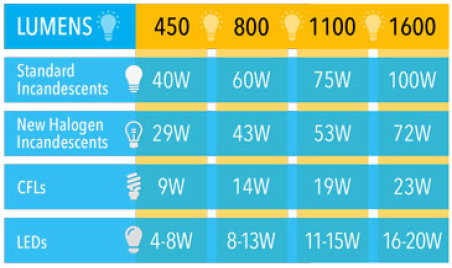
(Raw Lumens) therefore it can be misleading and not the actual measure of useful light emitted by a LED lamp. Factors such as the power used to drive the lamp, thermal losses and optic and lens losses as light rays travel through the lens all contribute to a possible 20-50% decrease of the light lumens emitted by the LED. Good optic skills, circuit design and material selection are required to minimise internal lumen losses. Another more accurate measurement of actual light output is lux. Quality lighting manufacturers, using state of the art photometric equipment, are able to provide accurate lux or candela charts so consumers get a fair representation of the expected Luminaire performance. Lux and candela ratings refer to the actual light intensity from the lamp at given distances and direction. This way you know what light levels to expect when designing your lighting layout. Other aspects to consider when reviewing luminaire performance include beam angle, and evenness of illumination, as well as colour temperature and colour rendering which we cover in later sections.
2: Beam Angle
If you stare directly into a LED luminaire, chances are it will appear bright and dazzle you. In fact looking directly at some of the high power LED chips for extended periods can be hazardous to the eye. Hella marine LED lamps use efficient lens and optic designs to reduce glare and eye strain while still projecting the light in an evenly distributed pattern. For example down lights will often have a wide spread optic to fill a room and by overlapping the wide spread beams from several Luminaires shadows are reduced. Alternatively other lamps like spotlights or courtesy lighting may be designed to focus or direct the light in a specific direction to achieve a specific effect.
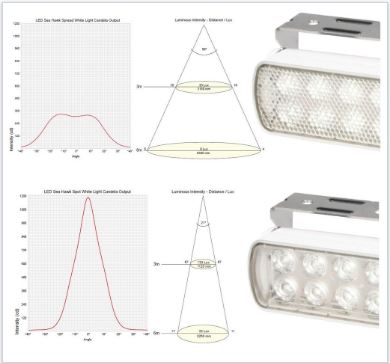
3: Power Consumption
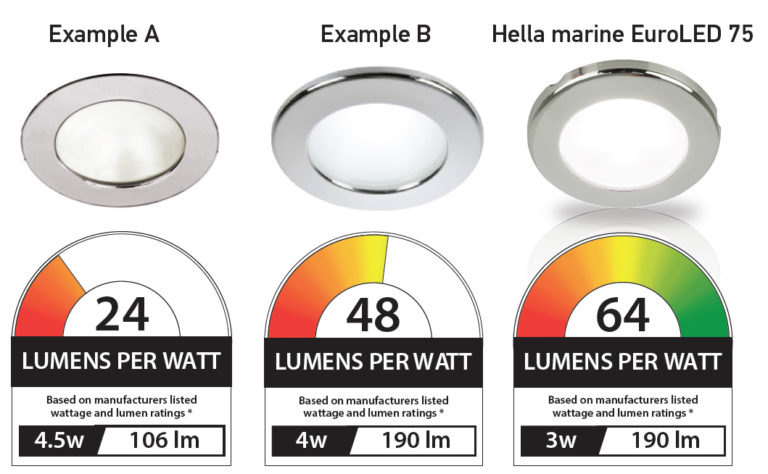
As mentioned earlier, LED lamps can save up to 90% of power compared to traditional incandescent lamps. It is a common misconception that all 4W LED lamps produce the same light performance. A well designed 3 watt LED lamp could produce more light than a 4 watt lamp. Much of the performance greatly depends on the LED used and as mentioned earlier the quality of the optic, thermal management and electronic. As LED technology is steadily advancing manufacturers have been able to produce LEDs with a much greater lumen per watt performance. This means lamps aregetting brighter and your power consumption from lighting is reducing. So efficacy, which is the measurement of lumens per watt, is an important consideration. If possible try and compare the lumens per watt to get an accurate measurement of what percentage of power is being used to effectively generate light. The more lumens per watt the more efficient the lamp is, meaning less power is being used to generate the equivalent amount of light.
4: Colour temperature (Kelvins) and Rendering Index (CRI)
When white LED lighting first became available it quickly gained a reputation for creating cold or blue colour tones. As technology has developed LED colour temperatures have advanced and today LED Luminaires are available in a wide range of colours temperatures, from similar to natural day light or the warm tungsten glow of traditional incandescent lamps. Think about what feel you want on your vessel. Cooler white colours (5000K) usually suit white gel-coat boats and exteriors while lush upholstery or varnished timbers look and feel better with a warmer (3000K) light. As LED technology continues to advance so does the colour rendering ability of LED’s. The higher the CRI rating the better and truer colour reproduction you will get of various objects. For example sunlight has the highest CRI rating of 100. LED lamps with a CRI rating of 80 or higher will reproduce the colour scheme of the interior with good accuracy.
5: Thermal Management
The notion that LED lamps run cool only when comparing to incandescent lamps that are too hot to safely touch after operating for a short period. The fact is the LEDs and the electronics inside a lamp do heat up and if not cooled effectively will affect the light performance and the expected life span of the lamp. A very hot running LED Luminaire can also cause issues when interacting with the surrounding materials, particularly in recessed lamps, that prevents the heat to dissipate. High power LED lamps do generate heat so the lamp needs to be designed toefficiently transport this heat away from the LED itself. LEDs that overheat, meaning the junction temperature of the LED rises above a set threshold, will permanently degrade, significantly reducing their luminous efficacy.
6: Materials
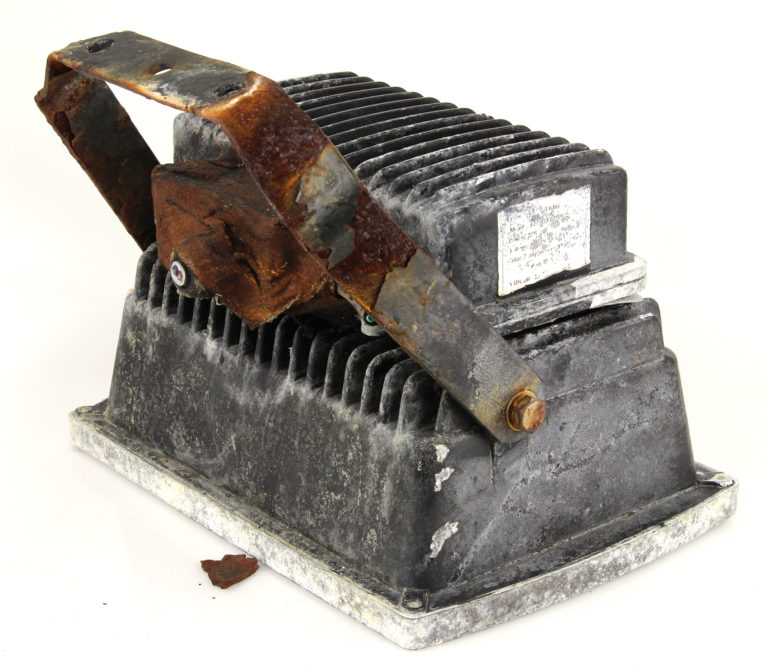
Maritime environments are very harsh, salty, high humidity and coupled with strong UV. Lamps manufactured using low grade, corrosive metals or poorly coated alloys soon degrade and rust. This can cause unsightly rust stains on the vessel and blemish the appearance of the lamp. Eventually the housing and sealing systems will break down allowing moisture to enter the lamp. Once this happens it’s only a matter of time until the electronics fail. Most consumers will have purchased and experienced products made from plastic materials that deteriorate, fade and become brittle very quickly when exposed to the sun. Continuous exposure to UV can also cause LED lamps to become brittle andcrack which eventually enables water or moisture inside.
Hella marine products are manufactured using high quality, corrosion resistant materials that have been tested and proven to be extremely durable in the marine environment. For exterior and high impact areas Hella marine has introduced Grilamid as the material of choice and are now using a revolutionary new ceramic polymer with outstanding thermal performance. Less metal also means less weight: Lamps with thermally conductive plastic are up to 60% lighter than comparable metal bodied lamps.
7: Sealing (IP Rating)

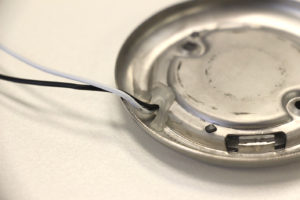

As LEDs are electronic devices it is important to protect them from moisture and other contaminants that will degrade or harm the lamp. In a marine environment this is even more important as the chance of getting water, condensation or salt spray around the lamp is highly likely even in interior applications. All commercial and leisure Hella marine LED lamps are at least IP 67 rated, meaning the same luminaire can be fitted to both the interior and exterior on your vessel, in either wet or dry conditions. With the same fully sealed LED light fitted both on the interior and exterior, a consistent lighting scheme can be kept and the vessel can be safely cleaned or water blasted without fear of water ingress into the lamps.
8: Electro Magnetic Interference (EMI)
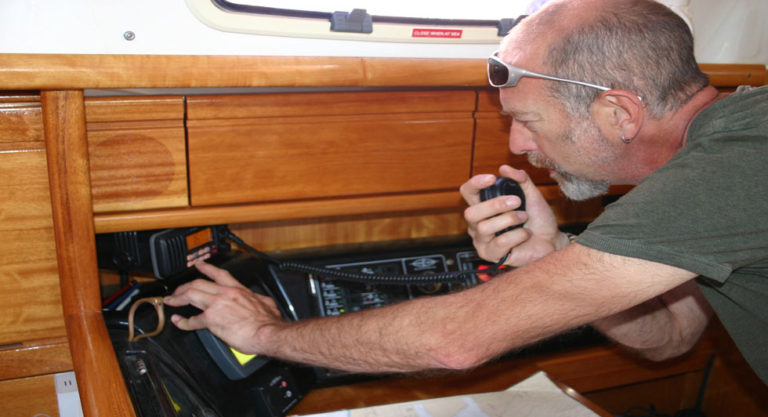
Electromagnetic Compatibility (EMC) is an increasingly relevant safety concern, especially for many emergency and industrial applications. As electronic devices such as LED lamps become more common, so does the risk of unintended electromagnetic interference (EMI) that can have adverse effects on other sensitive devices such as radios or communication equipment. Hella marine has introduced a new RFCommSafe range of products, developed in recognition that some radio communication equipment can self-tune to be very sensitive in remote locations. In these situations the limits prescribed by regulatory requirements and as defined in international standards such as EN 60945, IEC 61547, EN 55015 (CISPR 15) standards may not be sufficient to ensure there is no interference with very sensitive radio communication equipment.
9: Warranty
Depending on the brand of LED lamp purchased you can expect between a 12 month and 7 year warranty and this commitment of the manufacturer will be an indication of the confidence a manufacturer places in the long-term durability of their product. Buy from a trusted brand which has a reputation to stand behind their products All Hella marine LED lamps have a 5 year warranty with the exception of the NaviLED Tri-colour Anchor lamp which carries a 7 year warranty.
10: Cost
Obviously cost is an important consideration when making a purchase decision. Quality LED lamps are usually more expensive than incandescent lamps and there are price differences between LED lamps as well.As explained, there are vast differences as to the material choices and construction methods and standards a manufacturer designs to. It is important to not only consider the initial expense but the life time cost of the lamp or your vessel. The power saving and longer life span usually well off-sets the initial price paid over the life-time of the LED lamp. How well a LED lamp is designed, engineered and made will determine the eventual life span. Consider the total cost of purchase, maintenance and efficiency, repair andreplacement costs when purchasing your next LED product. Astute purchasers prefer to pay for a quality lamp with increased output, efficiency, light patterns and a 5 year warranty. For more information on Hella marine’s extensive range of LED lighting go to: www.hellamarine.com.




